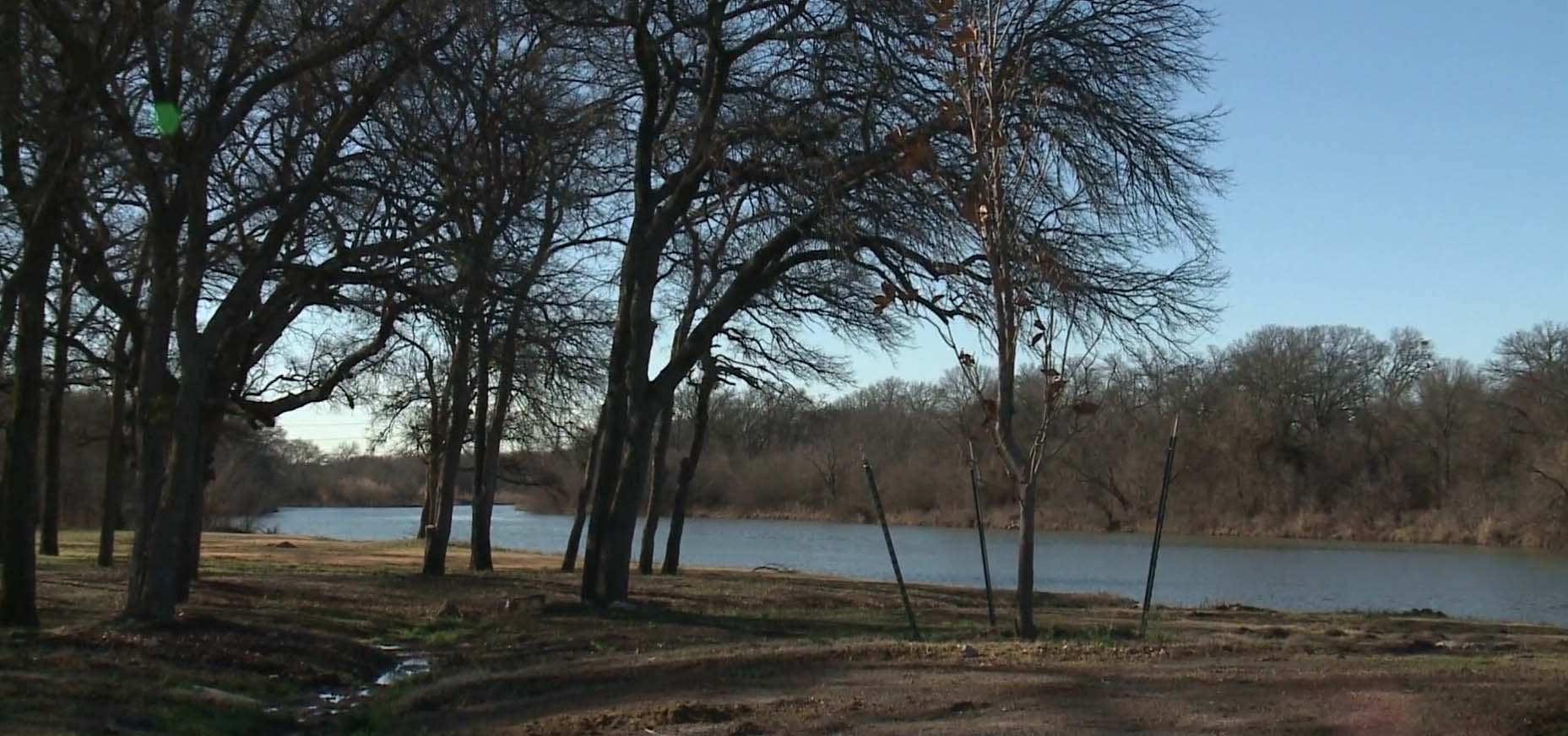Archive for March 2013
Science Outpacing EPA Lead Contamination Standards
 People who don't know any better expect agencies that are charged with removing environmental threats to public health to be on top of the best and most recent science. However, because of the glacial pace of government environmental oversight, that's hardly ever true. It takes years, and sometimes decades for "safe standards" to be updated or created. When they are, they're sometimes instantly obsolete because a new generation of studies has shown harm at even lower levels of exposure. This is why impacted citizens have to have a DIY philosophy to seek out the most recent science themselves – you can't depend on government to have already incorporated it or be using it as a guide.
People who don't know any better expect agencies that are charged with removing environmental threats to public health to be on top of the best and most recent science. However, because of the glacial pace of government environmental oversight, that's hardly ever true. It takes years, and sometimes decades for "safe standards" to be updated or created. When they are, they're sometimes instantly obsolete because a new generation of studies has shown harm at even lower levels of exposure. This is why impacted citizens have to have a DIY philosophy to seek out the most recent science themselves – you can't depend on government to have already incorporated it or be using it as a guide.
A particularly depressing example is the way the US EPA is dealing with lead contamination and its soil and dust standards. The last time these were updated, Bill Clinton was President. There's been a lot of science produced on lead poisoning since then and all of it points to lower and lower levels of exposure causing harm. In fact, there's a consensus among researchers that there is NO safe level of exposure to lead. It's not that every exposure will harm you, it's that every exposure is capable of doing harm – especially to children.
There's also overwhelming public policy consensus that exposures to lead should be minimized as much as possible. Reducing exposure to lead is now linked, not just to better physical health, i.e. less cancer, liver disease, etc., but to higher IQs and test scores in schools, less anti-social behavior, and even less crime. In California, the lead standard for soil has been reduced to 80 parts per million, compared to the circa-2000 EPA standard still in place of 400 ppm.
Acting in recognition of these facts, for the first time in over 20 years the federal Centers for Disease Control revised its lead-in-blood standard for children in 2012, cutting in half the amount it said should trigger a response from parent and doctor. As a consequence, the EPA's own Children's Health Protection Advisory Committee sent a letter to then-Administrator Lisa Jackson calling for the agency's "immediate and urgent attention" to revise the nation's lead dust and soil standards because they had been based on the previous, now-obsolete CDC standard.
But in the latest installment of her year long award-winning series of articles on the topic, USA TODAY's Allison Young quotes EPA officials as saying they have no current plans to update those standards to reflect the new CDC lead in blood action level. This, despite studying the issue since 2009. What difference does it make?
In places like Frisco, Texas that experienced decades of lead contamination from a poorly and often illegally-operated lead smelter, it means the EPA will allow what it knows to be dangerous levels of lead to remain in soil and dust that otherwise would have to be cleaned-up.
This is Exhibit A why citizens cannot leave environmental protection to government agencies alone. This is why Frisco residents, organized by Frisco Unleaded, are trying to intervene directly in the closure and clean-up of the Exide lead smelter. If you leave it up to the state or EPA, you won't have the best science, or the most protective clean-up. You will have settled for whatever government standard was in place at the time, no matter how outdated or unsafe. If you're a parent in Frisco, that shouldn't be YOUR standard.
New Report Says Burning Coal in Europe Costs Billions in Health Care
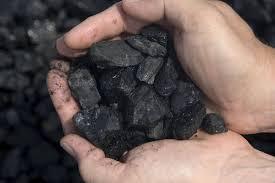 Many of you are aware that former EPA Regional Administrator Al Armendariz is now heading-up a Sierra Club effort to close the remaining old coal plants in East and Central Texas that have plagued downwind communities, including DFW, for decades. One big reason is the direct connection between the kinds of pollution these plants release, like Particulate Matter, and their known health effects. Based on past studies, scientists are able to determine what levels of air pollution cause what level of medical responses.
Many of you are aware that former EPA Regional Administrator Al Armendariz is now heading-up a Sierra Club effort to close the remaining old coal plants in East and Central Texas that have plagued downwind communities, including DFW, for decades. One big reason is the direct connection between the kinds of pollution these plants release, like Particulate Matter, and their known health effects. Based on past studies, scientists are able to determine what levels of air pollution cause what level of medical responses.
Last week, something called the Health and Environmental Alliance released a report that used that methodology to add up what it said was all the early deaths, hospitalizations, medications and reduced productivity caused by breathing coal plant pollution in Europe and came up with a total of $55 billion a year. It's the first-ever calculation of the effects of coal-fired power generation on chronic lung disease and some heart conditions for the entire continent.
Significantly, it has found that the effects of the pollution which coal incineration causes are not confined to people living close to power stations, but can affect entire populations in varying degrees.
Burning coal to generate electricity worsens a group of conditions known as chronic obstructive pulmonary diseases, the report said. These include emphysema, breathing obstructions and bronchitis. It also aggravates asthma and worsens heart disease.
HEAL says the elderly and the young are at particular risk, with lung damage sustained in childhood reducing the chances of achieving maximum lung function in adult life.
We haven't seen any similar studies of the costs of breathing coal plant pollution in Texas or DFW, but they could be large since we're directly downwind of the state's "lignite belt" where almost all the older, dirtier coal plants are located.
Scientists: Classify Plastic As Hazardous Waste
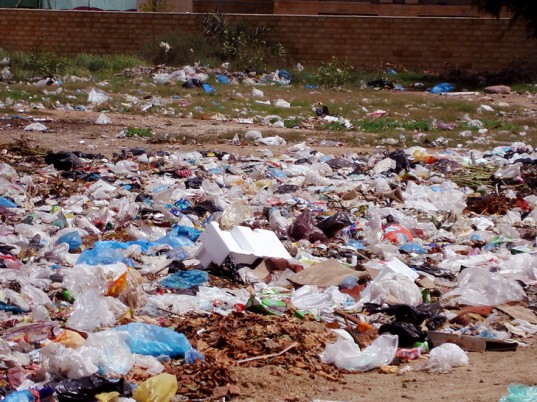 We missed this the first time around, so we're glad that "Living on Earth" caught it again. A group of scientists, including marine biologist Chelsea Rochman, recently signed an article in the magazine Nature that called for classifying plastic as a hazardous waste.
We missed this the first time around, so we're glad that "Living on Earth" caught it again. A group of scientists, including marine biologist Chelsea Rochman, recently signed an article in the magazine Nature that called for classifying plastic as a hazardous waste.
What's the rationale? It turns out to be pretty solid and based on current regulations. As Rochman described it,
Waste is basically separated into two categories, those that are non-hazardous like grass clippings, and those that are considered a hazard, which are often based upon this long list of priority pollutants, or substances that the government deems are hazardous to organisms. And we found that plastics are associated with 78 percent of these priority pollutants listed by the US EPA and 61 percent listed by the European Union, either as a chemical ingredient of the plastic itself or when the plastic ends up in the aquatic environment; they absorb these contaminants from the water. And so from that perspective we thought maybe plastic as a waste product should also be considered as a hazardous substance.
Rochman cites styrene in Styrofoam as an example of a well-known pollutant that's incorproated into plastic. Another is vinyl chloride that's used to make PVC.
Plastics' threat to marine life has been well-documented, but it's also a threat to those living downwind of places that burn plastic wastes – like an increasing number of cement plants, including TXI's huge Midlothian Kiln #5. Besides being assaulted by the leftovers of the ingredients in the original plastic, downwind neighbors are also subjected to entirely new pollutants that are made ONLY when plastics are burned. The most notorious of these is Dioxin, one of the most potent poisons ever tested. Dioxin is what made Agent Orange so toxic to Vietnamese and veterans alike. It's why Times Beach Missouri is a Superfund Site. And it's what's released every time plastics are burned.
Incineration of plastics is dramatically increasing despite producing this kind of pollution. Classifying this waste as "hazardous" might be the only way to limit their use as "fuel" in cement kilns that weren't built to be garbage incinerators.
Take a Tour of Dallas Gas Sites and Decide for Yourself if They’re Wasteland
(Dallas)—-A local clean air group released a short film of an official Dallas City Plan Commission tour of controversial gas drilling and production sites that it says rebuts the claims made by City Council members during last Wednesday's City Manager’s briefing on parkland drilling that the land is "desolate" and a "wasteland.”
Downwinders at Risk posted "Dallas Fracking Mystery Tour” early Tuesday morning for public viewing on its own website. It's a fast-paced four minute journal of a January 31st City Plan Dallas City Plan Commission bus tour of all three proposed Trinity East gas permit sites in Dallas: The Gun Club and the LB Houston/Luna Vista Golf Course drilling sites, both on city parkland, as well as the Luna Vista Processing Plant site, aka, "The Rawlings Refinery and Compressor Station," located only a short distance away from the City of Dallas' new Elm Fork Athletic Complex.
The group hired a local professional filmmaker to accompany the 15 Plan Commissioners, various city staff and members of the public on the half-day outing from the time they boarded two buses at City Hall to the last site visit, including question and answer sessions between Commissioners and David Cossum, the City of Dallas Assistant Director of Sustainable Development and Construction. The result is a quick take on each of the sites through the eyes of the tour participants.
“Contrary to claims by Council members who’ve never visited the sites they want to condemn, the Trinity River bottoms are not “wasteland,” said Jim Schermbeck, Director of Downwinders. “Even a quick look like this tour offered shows its never going to be mistaken for a Midland-Odessa oil patch.”
During last Wednesday’s briefing, Council member Sheffie Kadane compared the park land sites at the Gun Club and the Golf Course to West Texas oilfields, Council member Jerry Allen called them a “wasteland,” and Council member Dwaine Caraway said they didn’t represent “quality park land.” But looking at it the sites from the perspective of the Plan Commission tour, one sees expanses of hardwood forests, sculpted fairways, and a peacefully flowing Trinity River close-by.
Besides offering a striking visual counterpoint, the tour’s on-site Q&As between Plan Commission and City staff reveal other mistakes in drilling proponents’ claims about the sites. For example, Kadane has insisted there would never be drilling equipment in the actual flood plain, but as Cossum explains to an inquiring Commissioner, there will be.
Another Q&A at the refinery and compressor station site reveals City staff’s contradictory stances on sources of pollution surrounding the Elm Fork Athletic Complex – a new recreation facility expected to attract hundreds or thousands of children and their families on weekends.
The city is opposing a new permit from a near-by rock crushing facility permit because of concerns about its 17 tons of annual air pollution so close to the Complex, but supporting the construction of a gas refinery and compressor station that will admittedly release at least 75 tons a year of air pollution only 50 feet further away.
Using the Beatles’ “Magical Mystery Tour” as a recurring soundtrack, the short film uses no voice over narration, relying only on the comments of tour participants and text. It repeatedly asks why the city would contradict its own current policy, answering that “It was a Mystery” at the time of the tour.
However in a postscript, it adds the February 7th Dallas Observer publication of the 2008 “secret agreement” between Dallas City Manager and Trinity East to exchange funds for leases on city land for city staff help in approving drilling and production permits. “Suddenly, it wasn’t a mystery anymore.”
Schermbeck says his group hopes the film will put “a face on the sites” they haven’t had before, and offer a short, entertaining way to get educated about the controversy. “There’s been a lot of misinformation about these sites perpetrated by people who’ve never visited them. People can now see them the way the Plan Commission did and decide for themselves.“
DMN Report on the Irving Wells the City Of Dallas Already Shares with Trinity East
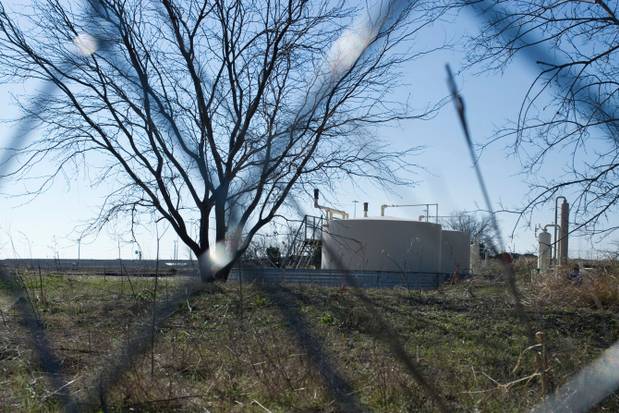 If you can, get the dead tree editon of the story because it has maps and such that the online version doesn't (we're looking at you Robert Wilonsky). What both versions make perfectly clear is that Trinity East REALLY needs that Rawling Refinery and Compressor Station near the Elm Fork Athletic Complex to make it's network of wells in Dallas, Irving and Farmer's Branch pay off.
If you can, get the dead tree editon of the story because it has maps and such that the online version doesn't (we're looking at you Robert Wilonsky). What both versions make perfectly clear is that Trinity East REALLY needs that Rawling Refinery and Compressor Station near the Elm Fork Athletic Complex to make it's network of wells in Dallas, Irving and Farmer's Branch pay off.
Geography suggests how vital the Dallas sites might be, especially the one where Trinity East wants to build its gas processing plant. It is almost squarely in the middle of its holdings. Running right by it and near most of the leases is a rail line — a possible route for a pipeline right of way to and from the plant.
Read other accounts of this Irving chapter of the on-going Dallas Drilling Scandal at the Dallas Observer, the Dallas Residents for Responsible Drilling and our own coverage.
Early Life Exposure to BPA Linked to Asthma Onset
 Children exposed to routine levels of the chemical bisphenol A (BPA) in the first seven years of life are more likely to have asthma, according to a new Columbia University Medical Center study.
Children exposed to routine levels of the chemical bisphenol A (BPA) in the first seven years of life are more likely to have asthma, according to a new Columbia University Medical Center study.
The children studied had roughly the same concentrations of BPA as the average for U.S. kids. “We saw increased risk of asthma at fairly routine, low doses of BPA,” said Dr. Kathleen Donohue, an instructor in clinical medicine at Columbia University Medical Center and lead author of the study.
The study, which tested 568 children and their mothers in New York City, is the first to link early childhood exposure to BPA with asthma. Studies with lab mice, however, have found a similar link.
Children with higher levels of BPA at ages 3, 5 and 7 had increased odds of developing the respiratory disease when they were between 5 and 12.
BPA is used to make polycarbonate plastics and is found in many canned foods and beverages, on paper receipts, and in dental sealants. As a result, more than 90 percent of Americans have traces of BPA in their bodies.
Medical experts for decades have been trying to figure out what has caused asthma rates to skyrocket in children throughout much of the world, beginning in the 1980s. Many suspect that it might have something to do with early-life exposures and changes in immune systems causing inflammation.
If one then adds this injury to increased levels of smog, VOCs, or particulate matter that can set such inflammation off, it's not hard to imagine a conspiracy of chemicals causing a new rise in an old ailment.
One out of every 10 U.S. children has been diagnosed with asthma, and the rate is one out of every six for black children, according to 2011 data from the Centers For Disease Control and Prevention.
Because it’s the first study of its kind, it’s too early to blame BPA for asthma, Harley said. But the chemical is increasingly linked to more and more children’s health problems.
“This is another study showing an association between health outcomes and early life exposure with BPA,” she said. “Several studies look at children’s behavior, development, thyroid hormones, now an association with asthma. There’s really starting to be accumulation of evidence.”
The study, which tested 568 children and their mothers in New York City, is the first to link early childhood exposure to bisphenol A (BPA) with asthma. Studies with lab mice, however, have found a similar link.

|
| JasonUnbound/flickr |
| One out of every ten U.S. children has been diagnosed with asthma. |
A Columbia University research team reported that children with higher levels of BPA at ages 3, 5 and 7 had increased odds of developing the respiratory disease when they were between 5 and 12.
– See more at: http://www.environmentalhealthnews.org/ehs/news/2013/asthma-and-bpa#sthash.zFBBJBLc.dpuf
How Green is My Sequester
 It's large and in charge. It's the official 7-month long federal budget sequester imposed by Congress and the President on themselves some months back. You've heard about the impact to air traffic controllers, education, and the military, but how does this affect the environment stuff the feds are supposed to be doing? Mother Jones has you covered, including the effect on fracking and oil regs.
It's large and in charge. It's the official 7-month long federal budget sequester imposed by Congress and the President on themselves some months back. You've heard about the impact to air traffic controllers, education, and the military, but how does this affect the environment stuff the feds are supposed to be doing? Mother Jones has you covered, including the effect on fracking and oil regs.
Former Exide Smelter Employee: It WAS as Crappy As You Thought
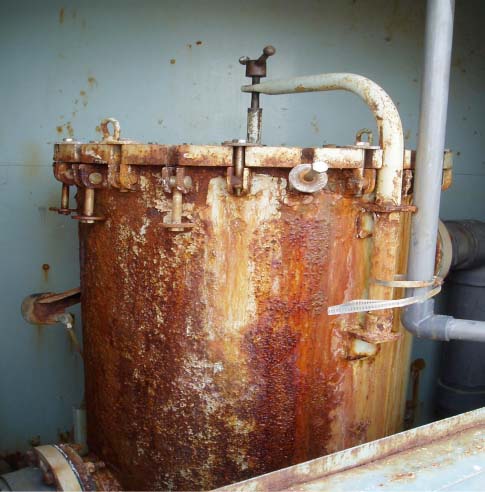 Although the Great Dallas Drilling Scandal has kept our heads spinning lately, we did mange to take note of a rather big story in a small paper that should get a lot more coverage.
Although the Great Dallas Drilling Scandal has kept our heads spinning lately, we did mange to take note of a rather big story in a small paper that should get a lot more coverage.
On February 21st, the Frisco Enterprise-Plano Star community newspaper published an article about the Exide lead smelter in Frisco using an unnamed ex-Exide employee as the sole source. The sole source's anonymity probably kept major outlets from offering the same coverage, but in this case the specifics are so compelling that we're glad the suburban chain took the chance.
Although he never gives his name, the Star says the employee "served in a managerial position at the plant." From the workday scenarios he describes he appears to have been directly involved in Exide's production line. Taken together, all of the accounts he gives the paper would seem to confirm residents' impression that the circa- mid 1960's Frisco facility was a mobile home park with a lead smelter in the middle of it.
"I guess we were probably producing $200,000 worth of product every shift — $600,000 worth of product every day," he said. "Yet [one time] we had six people working on [maintenance when the plant lost power]. We had one flashlight and one set of tools. What I needed was six flashlights and six sets of tools, but they wouldn't even give me that."
If Exide wouldn't open up the corporate wallet for flashlights, no wonder the company balked for so long about adding multi-million pollution controls to reduce lead emissions to legal levels.
And, according to the Star's source, those lead (and cadmium and arsenic) emissions could be many times what's been officially estimated by government agencies, or even citizens' own air modeling results published last year.
Power being knocked out was a particular issue, the source said, as vapors resulting from the lead-acid recycling system were no longer captured. Those vapors include lead particles, and long periods of lead exposure result in chronic lead poisoning, which in turn can result in physical defects such as kidney damage.
The former employee doesn't say how often this kind of outage occurred, but he makes it clear it wasn't infrequent. It wouldn't take too many such incidents to significantly raise the exposure level of those residents living downwind. Of course, when the state and EPA are calculating what constitutes "safe" levels of exposure to a facility's pollution, they never take into account these kind of "upsets" or accidents that can balloon the chances of inhaling harmful poisons.
Among the other allegations made by the ex-employee:
Only 1/5 of the violations Exide received "for a lack of federal compliance or unsafe working conditions" were forwarded to the Texas Commission on Environmental Quality.
Incident reports submitted to the state about violations represented "a great difference in the truth" between what was being claimed by Exide, and what really happened.
These incidents were as frequent as every other week.
Prior to the announced visits of TCEQ or EPA inspectors, "employees were paid overtime to clean the plant extensively. The same initiative was made before visits by non-plant employees, such as trips by corporate managers. Outside of those events, however, the plant was rarely cleaned."
Carbon dioxide monitors were constantly beeping, indicating dangerous CO2 levels. "The environment of operations was poisoning us."
Ah, but all of that is in the past, right? Not with Exide planning to leave over 9 million pounds of lead smelter waste behind on 90 acres in the middle of central Frisco, with another hundred acres or so outside of that donut hole" being purchased by the city for rehabilitation.
When asked if he would feel comfortable visiting the land Frisco purchased from Exide when it's remediated to federally compliant levels, the former employee said he wouldn't.
"With the way it's going right now, I'll never take my children or my dog to that area," he said. "I studied petroleum engineering and geology in college, and I know the bad stuff sinks to the bottom. I will never [go there]. It'll be nice to have it gone, but I don't know how you patch that up. You have to pull up everything, wrap it up and get it gone."
Official reaction was predictable:
"An Exide Technologies spokeswoman said the company "does not comment on unsubstantiated hearsay"…"A TCEQ spokeswoman said she could not comment on whether or not an employee signing an incident report with false information would be illegal without being told what reports are in question."
It'd be better if former employees like this came completely forward and were willing to cooperate with the EPA in exchange for immunity, but we're grateful for the peak inside Exide. It confirms not only what we already suspected about the way this company and this plant did business, it also once again confirms the way all bad acting polluters behave when it comes to hiding their real identity from the public and regulators.
Big Day in Big D Drilling Fight: DMN Comes Out Swinging, and Claudia Meyer Will Take On Vonciel Hill for Council Seat
 It's hard to put Wednesday's Dallas City Council meeting into words. The level of aggressive ignorance reached heretofore unknown oxygen-gasping altitudes, as a City Manager who intentionally deceived the Council and public for at least five years was compared to Jesus, and meddlesome residents were castigated for being impediments to the real job at hand – draining city "wasteland" of its gas resources.
It's hard to put Wednesday's Dallas City Council meeting into words. The level of aggressive ignorance reached heretofore unknown oxygen-gasping altitudes, as a City Manager who intentionally deceived the Council and public for at least five years was compared to Jesus, and meddlesome residents were castigated for being impediments to the real job at hand – draining city "wasteland" of its gas resources.
Save for a Perry Mason-worthy cross-examination of City Manager Mary Suhm by Council member Angela Hunt with back-up by Scott Griggs and Sandy Greyson, citizens looking for some accountability for the lack of disclosure over a side deal with industry, or how parkland that was never slated for drilling suddenly landed on a list of drill sites, were left very disappointed.
But professional journalists are paid to write about such things no matter how hard it is to capture the depth of obliviousness, shallowness, and empty-headedness. And If you haven't already, you need to read two published accounts that will send you reeling. One is Jim Schutze's take in the Dallas Observer. The other is today's surprisingly strong Dallas Morning News editorial. We urge you to leave an online comment in support of this editorial, as it's one of the most remarkable the News has ever published. That in itself should indicate how bad Wednesday was – even the Morning News, defender of the Dallas Establishment, was appalled.
As Schutze points out, the most over-the-top and vicious diatribe belonged to current Council member Vonciel Hill, who wrapped herself in self-righteous religious language in condemning fellow council member Angela Hunt and praising the City Manager. From her skewed point of view, it was Mary Suhm who had been outrageously wronged, and Hunt who was at fault for even questioning the integrity of a person who would engage in obviously unimportant things like secret agreements with industry, and misleading statements.
That's why we're very encouraged to hear the news this morning that longtime neighborhood advocate and clean air supporter Claudia Meyer is filing to run against Vonciel Hill in the newly-created District 3 that covers southwest Dallas. Claudia is a former Assisted Living facility director and medical social worker who's lived with her husband in the same Mountain Creek home for over 30 years. She’s been a well-known neighborhood advocate as a board member of both the Fox Hollow Homeowners Association and Mountain Creek Neighborhood Alliance. She also has a long history of volunteer public service on behalf of the community including membership on the boards of the Friends of Mountain Creek Library, Friends of Fox Hollow Park, and the Dallas Municipal Library Board.
But most people reading this will instantly recognize her as the motherly-figure that has guided Dallas neighborhood resistance to irresponsible gas drilling for the last four years. She and her husband Ed have been a fixture at every official meeting where gas permits have been discussed since 2009. They also happen to be longtime Downwinders, having come on board during the 1990's TXI hazardous waste burning fight.
 Given the tone of the Dallas City Council on Wednesday, symbolized by Vonciel Hill's speechifying, electing Claudia Meyer may be that the most important thing any Dallas area person who calls him or herself an environmentalist can do for the local biosphere between now and June. Why? Defeat of Hill would strike at the heart of the drilling-at-all-costs faction of the Council, and just might provide a one-vote margin for denying all three Trinity East gas permits, including the refinery/compressor station that will become Dallas' 10th largest air polluter in Dallas the moment it comes online. Moreover, along with Scott Griggs and Sandy Greyson, Claudia could be a strong voice for a greener, more citizen-friendly Dallas in general. That's why the North Dallas-based Citizens Council will probably be spending a lot of money trying to re-elect Hill.
Given the tone of the Dallas City Council on Wednesday, symbolized by Vonciel Hill's speechifying, electing Claudia Meyer may be that the most important thing any Dallas area person who calls him or herself an environmentalist can do for the local biosphere between now and June. Why? Defeat of Hill would strike at the heart of the drilling-at-all-costs faction of the Council, and just might provide a one-vote margin for denying all three Trinity East gas permits, including the refinery/compressor station that will become Dallas' 10th largest air polluter in Dallas the moment it comes online. Moreover, along with Scott Griggs and Sandy Greyson, Claudia could be a strong voice for a greener, more citizen-friendly Dallas in general. That's why the North Dallas-based Citizens Council will probably be spending a lot of money trying to re-elect Hill.
We'll continue to try and help you educate yourselves about candidate choices, so that you'll when you step into the booth and pull the lever, you'll know who best answers the question: "In your opinion, If Jesus was the City Manager of Dallas, would he make secret deals with gas companies and be hankering to drill on park land?"
Finally, today folks begin arriving for the national fracking conference taking place on Saturday and Sunday at the Best Western Plus Dallas Hotel & Conference Center at 8051 Lyndon B Johnson Freeway just east of Coit (map). The line-up for speakers on Sunday is particularly stellar, as we wrote about last week – three national speakers you don't get to hear in the same place on the same day very often.
And if you want the Dallas City Council to know exactly how you feel about its performance on Wednesday, you can join members of the nationally known "Light Brigade" for an evening protest on Saturday beginning at 6:30 at the hotel. These folks use LED lights to make short "freeway blogger" type messages that thousands of people end up seeing. Very effective use of new technology. Saturday's message will be "No Fracking" and they'll be close enough to LBJ to make an impact. You can learn more about them here at their Facebook page.
What Wednesday made clear is that we have a lot of work left to do, and that this is now a defining moment in Dallas civic history. We have the power to shape it, but we all must now commit to not only talking the talk, but walking the walk – block by block.

